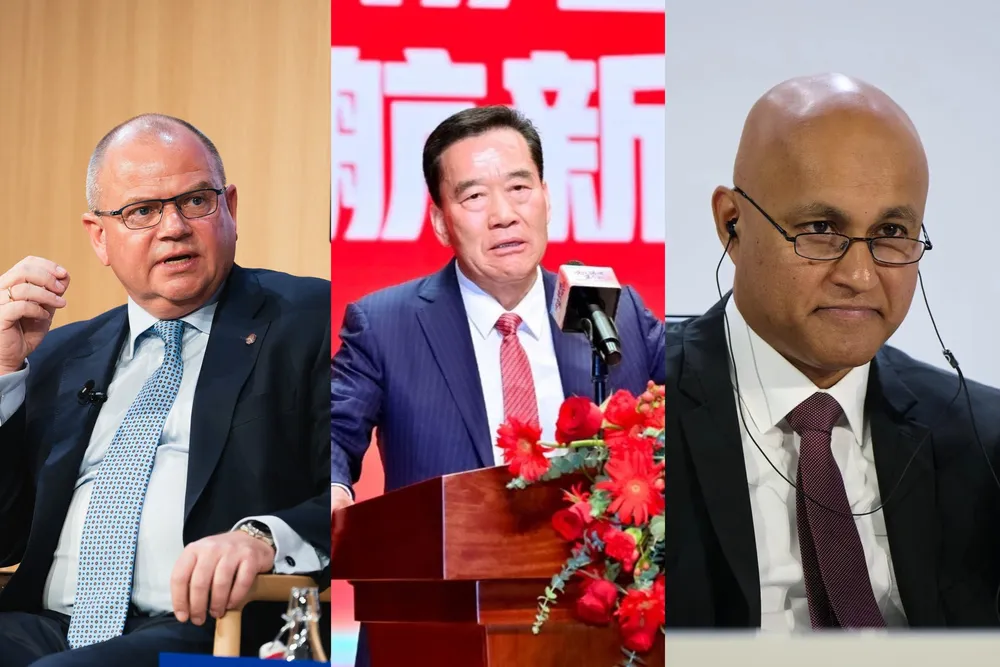Mingyang factory would 'mount pressure' on Vestas and Siemens Gamesa
Mingyang may be making strategic play by going public with factory plan before winning approvals or orders, say analysts, who note ‘shifting tone’ in industry on Chinese suppliers

Mingyang’s plan to build a multibillion-dollar offshore wind turbine factory in Scotland will turn up the pressure on Vestas and Siemens Gamesa, say analysts, who also noted a “very unusual” aspect of the Chinese supplier’s announcement.
The plan remains subject to UK government approval, which is not a given at a moment of extreme sensitivity regarding the country’s relationship with China.
The collapse of a trial against two UK citizens accused of spying for China has dominated headlines in British newspapers this week. The case – brought under the Official Secrets Act – is said to have collapsed because prosecutors could not obtain government evidence referring to China as a national security threat.
Prime Minister Keir Starmer has sought to warm relations between the countries since winning power last year, with a host of his top officials, including energy minister Ed Miliband, having visited the country.
Recently released government records also reveal that Ashley Ibbett, director general for energy infrastructure at the UK’s Department for Energy Security and Net Zero, met with Mingyang and consultancy giant KPMG in June.
Should the factory plan proceed, Mingyang will no longer be competing with European offshore wind giants Vestas and Siemens Gamesa from afar, but in their own back yard: the North Sea.
“A new, integrated competitor” shipping turbines locally in Europe from 2028 – when Mingyang hopes to have its factory up and running – will increase buyer options for projects competing in the UK’s AR8 and AR9 renewables auctions in 2026 and 2027, said Deepak Chinnapa, director at renewables consultancy Brinckmann Group.
That will in turn “mount pressure” on the aforementioned incumbent suppliers, he said, both on price and other terms they are willing to offer.
Western markets had expected GE Vernova to challenge Siemens Gamesa and Vestas, he said. “Mingyang could now occupy that space.”
“Geopolitical dynamics and compliance considerations will be equally decisive in determining outcomes,” cautioned Chinnapa. “Mingyang will face significant geopolitical headwinds, including potential US pressure.”
Mingyang factory announcement ‘very unusual’
Chinnapa also noted an aspect of Mingyang’s factory announcement that he said was “very unusual”.
Namely, Mingyang has gone public with its factory plan “ahead of projects being won.”
As well as a lack of firm orders, Mingyang is also, as already noted, still lacking UK government approval for its factory.
“By going public before securing approvals, they’re effectively probing how open Europe really is to Chinese participation in the offshore wind supply chain,” said Mads Arild Vedøy, an offshore wind consultant formerly of German developer RWE.
“Even if the project doesn’t move forward, Mingyang still gains visibility, builds relationships, and gathers valuable intelligence about Europe’s political and industrial appetite,” he said.
“This is as much about long-term positioning in a market still trying to find its balance between openness, cost, and security as it is about doing direct business tomorrow.”
How will localisation affect cost of Mingyang machines?
But this price advantage stems from the vast economies of scale that the Chinese market and its highly developed and integrated supply chains provide.
So how will Mingyang setting up shop in the UK and relying in large part at least on local supply chains affect its competitiveness?
Brinckmann believes that the cost of turbines Mingyang and European rivals produce will “converge” if the Chinese OEM is making its machines in the UK, said Chinnapa.
“Building in Scotland would pull Mingyang into the same cost basin for towers, transport and labour norms as incumbents,” he said.
“On a per-MW basis, you could expect narrowing gaps once UK content is enforced.”
There could be a twist in the tail on this, however. Chao Guo, analyst at energy intelligence firm TGS 4C, noted that, should Mingyang’s factory plan proceed, its prospective customers could benefit from recent changes to the UK’s renewables auction.
The government this year introduced a Clean Industry Bonus policy into its annual Contracts for Difference rounds. This policy incentivises developers to source their components from local supply chains.
Suppliers based in the UK will have an advantage when bidding for projects, said Gou, as developers must meet minimum local procurement requirements to enter the auction round.
Guo noted that, with Vestas and Siemens Gamesa only having blade factories in the UK, Mingyang would have a comparative advantage with a fully integrated factory also producing other components.
So the Chinese company could be more ‘local’ to the UK than its Danish and German-owned rivals.
‘A no-go even a few years ago – now there’s more pragmatism’
If the factory plan does go ahead “it would send a strong signal, not just about Mingyang, but about how Europe chooses to move forward,” said Vedøy.
“Everyone wants to accelerate offshore wind, but also protect Europe’s industrial base. Balancing those goals is becoming increasingly difficult.”
“A factory like this could ease some real bottlenecks, but it would also raise tough questions for European OEMs and policymakers about how open the market should be to non-European suppliers.”
More broadly, “this is about balance between protectionism, cost, and the willingness to meet Europe’s offshore wind and climate targets,” he said. “That balance is getting harder to strike as governments face rising defence budgets and tighter public finances.”
It appears the “tone in the industry has changed” on using Chinese wind turbines in Europe, added Vedøy.
“Just a few years ago, even mentioning Chinese turbines was a no-go. Now there’s a more pragmatic attitude: people still see the value of a strong European supply chain, but in the end, it comes down to economics and political signals.”
(Copyright)